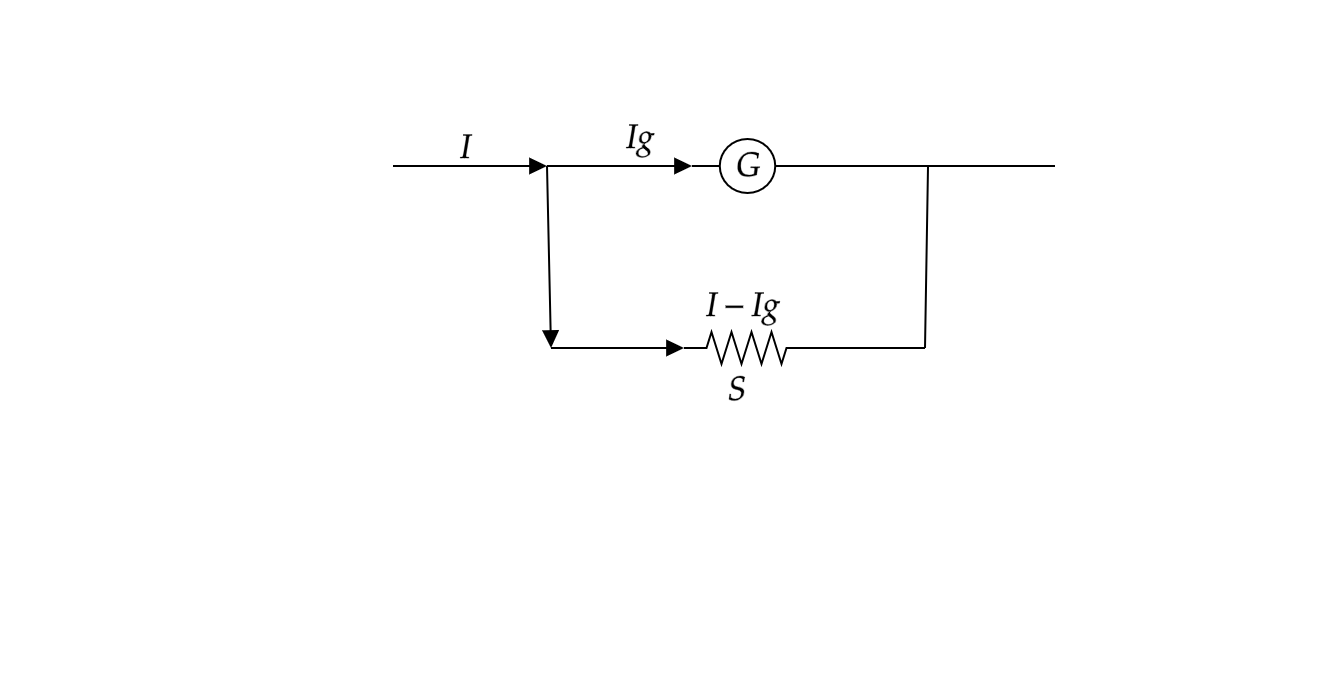
Explain how a moving coil galvanometer is converted into an ammeter. Derive the necessary formula.
Answer
485.7k+ views
Hint: A galvanometer is a measuring device which can show both the direction and magnitude of electric current whereas an ammeter is a current measuring device that can only show the magnitude of electric current. A galvanometer can also be used to measure voltage.
Complete step by step answer:
A moving coil galvanometer is a highly sensitive electromagnetic device that can detect the currents as low as the order of a few microamperes. The working of the galvanometer is based on the principle that, when a current-carrying coil is placed in an external magnetic field, it experiences some torque.
A galvanometer is a more sensitive device as compared to an ammeter. It cannot measure higher currents because of its sensitivity. Because of its high sensitivity, the needle of the galvanometer will deflect more for smaller currents, hence cannot measure higher currents.

To convert a galvanometer into an ammeter, we must lower the amount of deflection for a given amount of current so that we will be able to measure large amounts of currents. For this to happen, we connect a very low resistance called shunt resistance (denoted by S in the diagram) parallel to the galvanometer. When the current passes through the galvanometer, the value of shunt is adjusted in such a way that most of the current passes through the shunt, and thereby we can measure large amounts of currents from the galvanometer as deflection is reduced.
Required formulae:
In the above circuit diagram,
The current passing through the resistance is given by,
The conversion formula for a galvanometer into ammeter is:
This formula follows from application of Coulomb's law, that when voltage is constant, the resistance is inversely proportional to current.
Note: When the above shunt resistance is connected in parallel across the galvanometer, the galvanometer works as an ammeter and when the same shunt resistance is connected in series with the galvanometer, the galvanometer acts as a voltmeter.
Complete step by step answer:
A moving coil galvanometer is a highly sensitive electromagnetic device that can detect the currents as low as the order of a few microamperes. The working of the galvanometer is based on the principle that, when a current-carrying coil is placed in an external magnetic field, it experiences some torque.
A galvanometer is a more sensitive device as compared to an ammeter. It cannot measure higher currents because of its sensitivity. Because of its high sensitivity, the needle of the galvanometer will deflect more for smaller currents, hence cannot measure higher currents.

To convert a galvanometer into an ammeter, we must lower the amount of deflection for a given amount of current so that we will be able to measure large amounts of currents. For this to happen, we connect a very low resistance called shunt resistance (denoted by S in the diagram) parallel to the galvanometer. When the current passes through the galvanometer, the value of shunt is adjusted in such a way that most of the current passes through the shunt, and thereby we can measure large amounts of currents from the galvanometer as deflection is reduced.
Required formulae:
In the above circuit diagram,
The current passing through the resistance is given by,
The conversion formula for a galvanometer into ammeter is:
This formula follows from application of Coulomb's law, that when voltage is constant, the resistance is inversely proportional to current.
Note: When the above shunt resistance is connected in parallel across the galvanometer, the galvanometer works as an ammeter and when the same shunt resistance is connected in series with the galvanometer, the galvanometer acts as a voltmeter.
Recently Updated Pages
Master Class 12 Business Studies: Engaging Questions & Answers for Success

Master Class 12 English: Engaging Questions & Answers for Success

Master Class 12 Social Science: Engaging Questions & Answers for Success

Master Class 12 Chemistry: Engaging Questions & Answers for Success

Class 12 Question and Answer - Your Ultimate Solutions Guide

Master Class 12 Economics: Engaging Questions & Answers for Success

Trending doubts
Give 10 examples of unisexual and bisexual flowers

Draw a labelled sketch of the human eye class 12 physics CBSE

Differentiate between homogeneous and heterogeneous class 12 chemistry CBSE

Write a short note on Franklands reaction class 12 chemistry CBSE

Differentiate between insitu conservation and exsitu class 12 biology CBSE

What are the major means of transport Explain each class 12 social science CBSE




